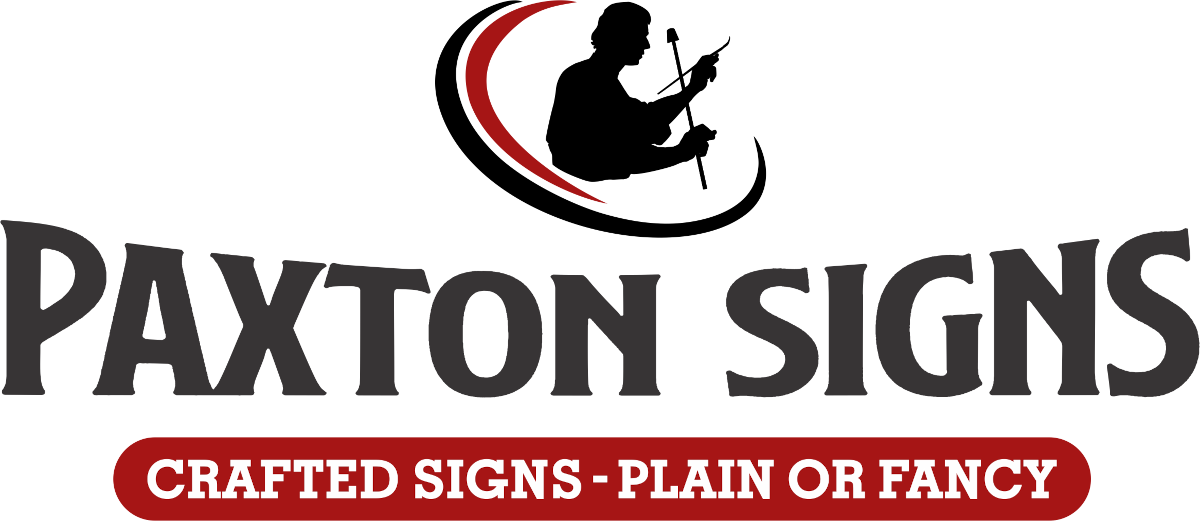 There are no hard and fast rules about text direction in the sign industry, at least as far as we know. However, there are opinions. Some are based on historical book and print examples, others on human nature. For example, in what direction do most people turn their heads to read vertical text? And, is stacking letters a good idea? Even if there are no definitive rules about text on signage, there are still a few logical vertical text do’s and don’ts.
There are no hard and fast rules about text direction in the sign industry, at least as far as we know. However, there are opinions. Some are based on historical book and print examples, others on human nature. For example, in what direction do most people turn their heads to read vertical text? And, is stacking letters a good idea? Even if there are no definitive rules about text on signage, there are still a few logical vertical text do’s and don’ts.
The western world reads left to right.
Most vertical signs and banners run text from bottom to top. Logically, the reason for this is that most of the western world reads from left to right; we naturally tilt our heads towards the first letter of the text that would appear on the left. If we rotate our heads left, that’s where we would start reading. Then, we read upwards to a satisfying finish. It’s awkward to read vertical text where the first letter starts at the top and reads down. However, there is one exception: if the vertical sign is positioned BELOW our line of vision, such as in descending stairways and garden levels, then text should begin at the top of the vertical sign and run downwards.
Signs aren’t books.
Some sign makers justify running all vertical text from the top, down. After all, it’s readable on book spines when books are placed side-by-side on a shelf, right? But, books are also stacked horizontally. So, top to bottom text placement on book spines is necessary in order to read it from left to right when books are stacked horizontally.
Ultimately, the crucial consideration is that book spines are normally displayed within close eye proximity AT EYE LEVEL OR BELOW. Since signs aren’t books, they are usually viewed from greater distances. So, a good rule-of-thumb might be to favor the human nature option. That is, if the text is to be read ABOVE eye level, then it should run from bottom to top. If the text is to be read BELOW eye level, it should run from top to bottom.
What about stacking letters?
 Stacked letters have a history all their own. Traditionally, this is a sign format used for many of America’s old theaters, curios, and drugstores. (See our ANTIQUES curio shop sign.) The practice dates back to Art Deco innovations during the early 20th century. However, most graphic and sign designers discourage the format. This is what Ellen Lupton of, Thinking With Type, says:
Stacked letters have a history all their own. Traditionally, this is a sign format used for many of America’s old theaters, curios, and drugstores. (See our ANTIQUES curio shop sign.) The practice dates back to Art Deco innovations during the early 20th century. However, most graphic and sign designers discourage the format. This is what Ellen Lupton of, Thinking With Type, says:
“Roman letters are designed to sit side by side, not on top of one another. Stacks of lowercase letters are especially awkward because the ascenders and descenders make the vertical spacing appear uneven…Capital letters form more stable stacks than lowercase letters. Centering the column helps to even out the differences in width.”
Essentially, we agree with Lupton. The exception we make is when the sign’s purpose is intended to recapture the Art Deco era or other historical timelines. As Lupton notes, if stacked letters are used, USE ONLY CAPS, NEVER LOWERCASE. In addition, the letter count should be minimal. Less is more!
 Readability and graphic interest come first.
Readability and graphic interest come first.
Obviously, most signs use horizontal text since it’s the most readable. However, for graphic interest, vertical and stacked text can be an option, but only when it’s used for the right reasons. Paxton Signs’ TATTOO GALLERY sign, pictured, is an example of stacked text in a period-art format. The letter count is acceptable, and the art elements and styling add to the sign’s cachet. (The logotype “Magnetic” was provided by the gallery.)
In the end, our challenge is to fit the necessary text and information into a sign’s available space. We try to do this in the most attractive and effective way possible. Ultimately, we choose to honor the logical arrangements of vertical text do’s and don’ts.
Reach us by phone at, 970-221-5519
Look for us on Instagram at, www.instagram.com/paxtonsigns/
See more Paxton Signs handiwork on Pinterest at, https://www.pinterest.com/boliver0474/boards/
View Paxton Signs’ galleries at www.paxtonsigns.com or by using the menu bar, above.
Visit us on facebook at, www.facebook.com/paxton.signs
